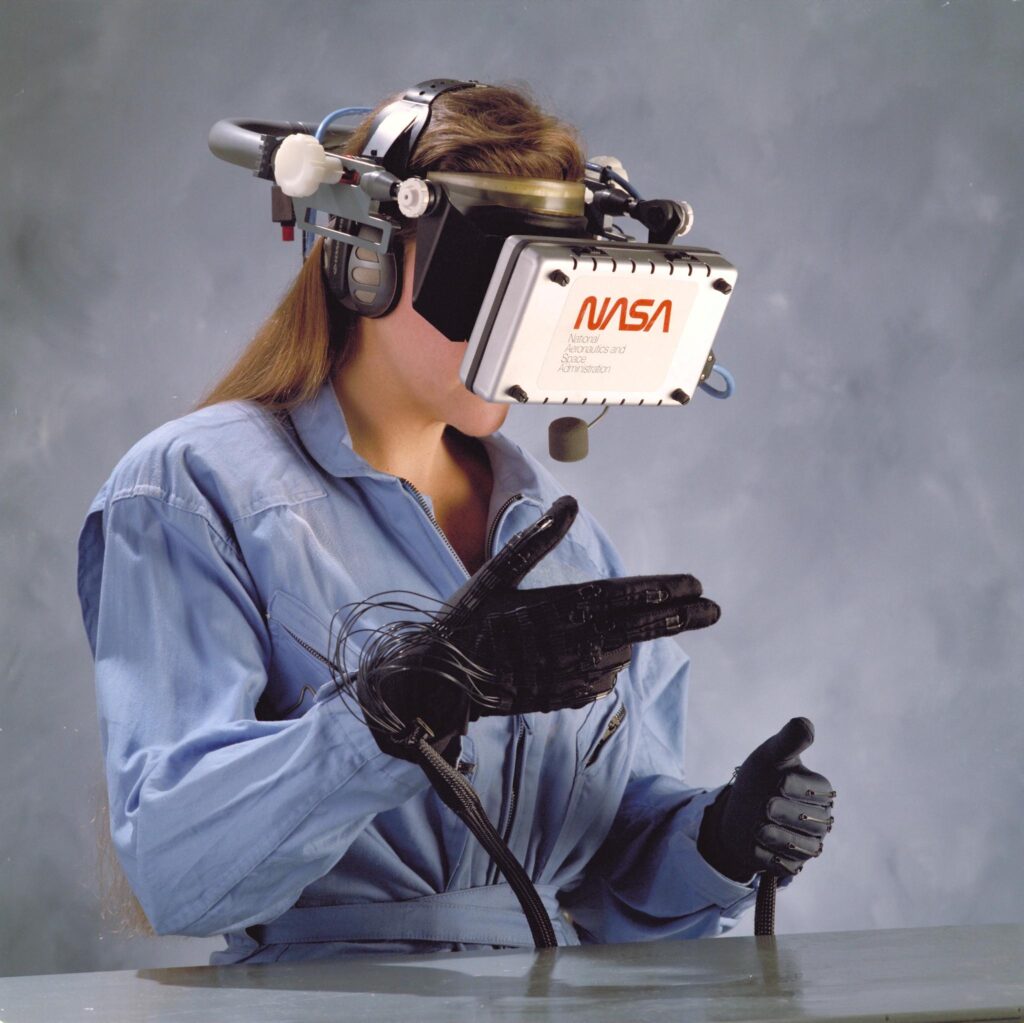In recent years, the financial sector has witnessed a paradigm shift, spurred by the advent of innovative technologies. Among these advancements, virtual reality (VR) has emerged as a transformative tool with the potential to revolutionize financial education. This article delves into the intersection of VR and financial education, exploring how immersive experiences are not only enhancing traditional learning methodologies but also making complex financial concepts more accessible and engaging for a diverse audience. By examining current applications, potential benefits, and future implications, we aim to shed light on how virtual reality is reshaping the landscape of financial literacy and professional training.
Revolutionizing Financial Literacy: Virtual Reality’s Role in Modern Education
With the advent of virtual reality (VR), a new era in financial education is emerging. VR’s immersive capability allows students to interact with complex financial concepts in an engaging and practical manner. For example, navigating a virtual stock market, managing virtual investment portfolios, or even practicing budgeting in a simulated household environment can transform theoretical lessons into tangible experiences. Such hands-on learning is crucial in grasping real-world financial scenarios.
Some of the key benefits of incorporating virtual reality into financial education include:
- Interactive Learning: VR provides a ‘learning-by-doing’ approach where students can apply financial theories in a safe, virtual environment.
- Enhanced Engagement: The immersive aspect of VR keeps students more engaged compared to traditional classroom methods.
- Practical Application: VR simulations allow for experimentation without real-world consequences, fostering better understanding and confidence.
| Feature | Benefit |
|---|---|
| Immersive Environments | Realistic scenarios for better retention |
| Interactive Simulations | Hands-on practice with immediate feedback |
| Gamified Learning | Increased motivation and engagement |
Immersive Learning Environments: Enhancing Financial Concepts Through VR
Virtual Reality (VR) offers an interactive way to understand complex financial concepts. Through 3D simulations and engaging scenarios, students can explore real-world financial situations without real-world risks. For example, VR tools can simulate stock markets, allowing learners to practice buying and selling stocks. They also help in visualizing financial data in completely new ways, turning abstract numbers into dynamic, interactive graphs.
- Risk-Free Practice: Engage in financial activities without fear of losing money.
- Enhanced Understanding: Visualize complex topics like market fluctuations and investment strategies.
- Collaboration: Interact with other learners in a virtual financial community.
| Feature | Benefit |
|---|---|
| 3D Simulations | Realistic, engaging practice |
| Interactive Securities Trading | Real-world experience |
Virtual Reality Simulations: Practical Applications in Financial Training
Imagine donning a VR headset and stepping into a bustling trading floor, interacting with financial instruments and making real-time decisions as you would in an actual stock market. Virtual reality (VR) simulations in financial training offer such experiential learning environments, allowing trainees to immerse themselves in complex financial scenarios without the risk of real-world repercussions. This method of hands-on learning helps bridge the gap between theoretical knowledge and practical application, offering a robust platform for honing analytical and decision-making skills.
In these VR environments, participants can engage in various financial exercises:
- Simulated trading and investment scenarios
- Risk management exercises
- Portfolio construction and analysis
- Real-time financial crisis simulations
Additionally, VR simulations can track and log user performance in detail, providing personalized feedback and areas for improvement. Below is a simple comparison table showcasing the benefits of VR simulations versus traditional training methods:
| VR Simulations | Traditional Training | |
|---|---|---|
| Engagement | High | Moderate |
| Risk | None | Possible |
| Feedback | Immediate | Delayed |
Strategic Implementation: Recommendations for Integrating VR in Financial Curricula
To effectively integrate VR into financial education, educators should focus on a few key areas. Hardware and software compatibility must be top priority to ensure a seamless experience for students. Choosing the right VR headsets and pairing them with compatible financial simulation software can make a big difference. Furthermore, creating interactive and immersive lessons tailored to various financial concepts can foster better understanding and retention. It’s crucial to develop content that not only covers the basics but also dives deep into advanced topics like market analysis, risk management, and investment strategies.
Incorporating VR into the curriculum requires precise planning and feedback mechanisms. Conducting pilot programs to gather initial data and using student feedback will help in refining the approach. Collaboration with industry professionals can provide real-world scenarios and case studies that make learning more practical and engaging. Below is a simple table illustrating the elements required for successful VR integration:
| Element | Description |
| Hardware | High-quality VR headsets and devices |
| Software | Compatible financial simulation programs |
| Content | Interactive lessons and case studies |
| Feedback | Student and educator insights |
Q&A
### Q&A:
Q: What is Virtual Reality (VR) and how is it being utilized in financial education?
A: Virtual Reality (VR) is an immersive technology that creates a simulated environment, allowing users to interact with a three-dimensional, computer-generated space. In financial education, VR is being utilized to create realistic and engaging learning experiences. It allows students to visualize complex financial concepts, participate in simulated trading environments, and engage in interactive scenarios that enhance their understanding and retention of financial principles.
Q: What advantages does VR offer over traditional financial education methods?
A: VR offers several distinct advantages over traditional financial education methods. Firstly, it provides experiential learning through immersive simulations, which can lead to better retention and understanding of financial concepts. Secondly, it allows for risk-free practice, where learners can make investment decisions and experience the consequences without real-world repercussions. Thirdly, VR can democratize financial education by making it more accessible and engaging, particularly for students who might find traditional methods abstract or uninteresting.
Q: Can you provide examples of specific applications or programs that use VR in financial education?
A: Yes, there are several innovative applications and programs utilizing VR in financial education. For instance, VR platforms like “VR Stock Market” allow students to engage in virtual trading floors, where they can practice buying and selling stocks in a controlled environment. Another example is “VR Budgeting Workshops,” where learners can navigate virtual households to understand budgeting, expenses, and savings in a simulated, hands-on way. These applications make financial learning interactive and practical.
Q: How does VR contribute to the understanding of complex financial markets and instruments?
A: VR contributes significantly to the understanding of complex financial markets and instruments by providing visual and interactive representations of these entities. For example, in a VR environment, students can see the real-time impact of global events on financial markets, understand the intricacies of derivative products through interactive models, and grasp the dynamics of currency fluctuations in a 3D space. This multi-sensory approach helps demystify complex topics and anchors abstract concepts in tangible experiences.
Q: What are the potential challenges or limitations of using VR in financial education?
A: While VR offers promising advantages, it also presents certain challenges and limitations. One major challenge is the high cost of VR equipment and the technical infrastructure required, which can be a barrier for widespread adoption, especially in underfunded educational institutions. Additionally, there is a learning curve associated with using VR technology, which may require additional training for both educators and students. Lastly, VR content must be meticulously designed to ensure educational accuracy and effectiveness, which can be resource-intensive.
Q: What does the future hold for VR in financial education?
A: The future of VR in financial education looks promising, with continuous advancements in technology likely to make VR more affordable and accessible. As VR hardware and software become more sophisticated, we can expect more comprehensive and nuanced educational programs. Innovations like haptic feedback, advanced AI-driven simulations, and real-time data integration will likely enhance the learning experience. Furthermore, as the adoption of VR grows, it could become a standard tool in financial education curriculums, providing students with a richer, more interactive learning experience.
Q: How are educational institutions and financial organizations responding to the integration of VR in financial education?
A: Educational institutions and financial organizations are increasingly recognizing the potential of VR and are beginning to incorporate it into their educational frameworks. Many universities and business schools are piloting VR programs to complement their traditional coursework. Financial organizations are also investing in VR to train their employees on complex financial instruments and market strategies. Collaboration between tech companies and educational institutions is fostering innovation and expanding the reach of VR in financial learning environments.
Q: Are there any noteworthy collaborations or initiatives currently underway in this field?
A: Yes, there are several noteworthy collaborations and initiatives in the field of VR-based financial education. For instance, partnerships between universities and tech firms like Oculus Rift or HTC Vive are leading to the development of tailored VR educational content. Industry collaborations, such as those between financial institutions and VR developers, are resulting in specialized training programs aimed at both students and professionals. Additionally, government and private sector grants are supporting research into the efficacy of VR in enhancing financial literacy and education.
Q: How can educators best integrate VR into their existing curricula?
A: Educators can best integrate VR into their existing curricula by starting with pilot programs to test efficiency and gather feedback. They should align VR activities with their learning objectives and ensure that content is relevant and reinforces key concepts. Training for both students and faculty on using VR tools effectively is essential. Additionally, educators should leverage VR to complement rather than replace traditional teaching methods, using it as an additional resource to enhance interactive and experiential learning. Regularly updating VR content to stay current with financial trends and innovations can also maximize its impact.
This Q&A format provides a comprehensive look at how VR is influencing financial education, covering the benefits, challenges, current applications, and future of this technology in the educational landscape.
Key Takeaways
virtual reality has established itself as a transformative force in the realm of financial education. By leveraging immersive experiences, it facilitates complex financial learning in ways that are both engaging and effective. With VR, users can navigate intricate financial scenarios, manipulate variables in real-time, and grasp abstract concepts through practical, hands-on interaction.
The implications of this technology are profound. Educational institutions and financial organizations are increasingly adopting VR to foster deeper understanding and retention of financial principles. As VR technology continues to evolve, we can expect even more sophisticated and interactive educational tools, tailored to meet the unique needs of diverse learner populations.
However, the integration of VR in financial education is not without challenges. Issues such as accessibility, cost, and the need for continuous content updates must be addressed to ensure equitable and efficient implementation. Despite these hurdles, the potential benefits of VR in this field are undeniable.
As the financial landscape grows more complex and dynamic, innovative educational tools like virtual reality will be crucial in preparing individuals to navigate it effectively. Through continued exploration and investment, VR has the potential to redefine financial education, making it not only more engaging but also more accessible and impactful.
Stay tuned to our updates as we monitor the ongoing advancements in this exciting intersection of technology and education.


